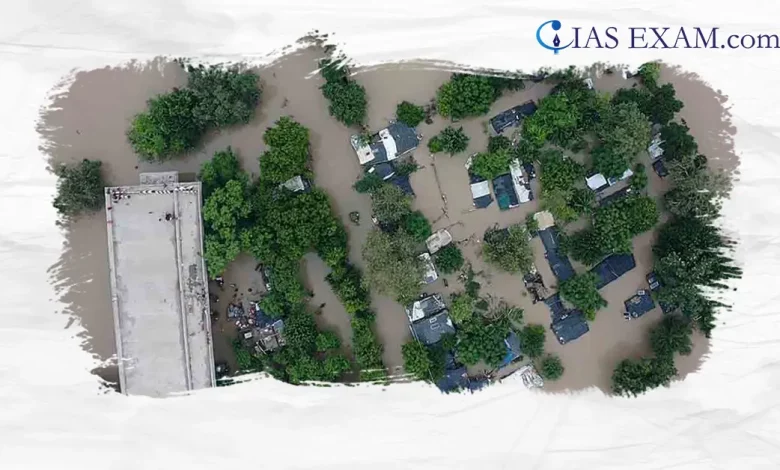Daily Current Affairs for UPSC
Flood Management and Border Areas Programme (FMBAP)
Syllabus: Government Schemes[GS Paper-2], Environment[GS Paper-3]

Context:
The Union Cabinet, led by the Prime Minister, has given its approval for the continuation of the Flood Management and Border Areas Programme (FMBAP).
FMBAP:
- The Flood Management Programme (FMP) is a centrally sponsored scheme that has a budget of Rs. 4,100 crore for a period of 5 years.
- It consists of two components: FMP and River Management and Border Areas (RMBA). Under the FMP, central assistance will be provided to state governments for flood control and anti-erosion projects.
- The funding pattern varies depending on whether the state is a Special Category State or a General Category State.
- The RMBA component focuses on flood control and anti-erosion work on rivers that border neighbouring countries, with 100% central assistance.
- This component also protects important installations along the border rivers.
- The scheme also incentivizes states that implement flood plain zoning, which is an effective non-structural measure for flood management.
Flood management practices have developed and improved over time in the country:
- While State Governments are primarily responsible for flood management, the Union Government has decided to support their efforts by promoting the use of modern technology and innovative approaches.
- Central assistance is necessary due to the increasing frequency of extreme weather events, which are likely to worsen in the future due to climate change.
- This will exacerbate the issue of floods in terms of their scope, severity, and frequency.
Flood Prone Areas:
- The National Flood Commission in 1980 estimated that the total area in the country prone to flooding was 40 million hectares, with 33.516 million hectares being unprotected.
- Later assessments during the X and XI Plans determined that the flood-prone area had increased to 45.64 million hectares.
Current flood management systems in India:
- India has a two-tier system for managing floods.
- At the state level, there are departments and committees responsible for water resources, technical advice, and flood control.
- The central government also plays a role by establishing organisations and expert committees to help the state governments address flood problems.
- These include the Central Water Commission, Brahmaputra Board, Ganga Flood Control Commission, Farakka Barrage Project Authority, and National Disaster Management Authority.
Various flood management strategies are implemented in India:
- There are engineering measures that can be taken to prevent or mitigate flooding, such as building dams or improving natural depressions.
- Non-structural measures include facilitating timely evacuation of people and their belongings, providing advance warning of incoming floods through forecasting and warning systems, and enforcing regulations to discourage settlement in flood-prone areas.
- These measures aim to mitigate the impact of floods and protect lives and property.
- Engineering and structural measures for flood control include the creation of reservoirs behind dams, improvement and regulation of natural depressions, diversion of peak flow to other rivers or basins, construction of parallel channels to bypass flood-prone areas, and the construction of embankments to raise river banks.
- Channel and drainage improvements can also help reduce flood levels and prevent spilling.
Conclusion:
- The government’s endorsement of the Flood Management and Border Areas Programme (FMBAP) demonstrates its dedication to improving flood management initiatives in various states.
- By prioritising advanced technology, creative strategies, and non-structural interventions such as floodplain zoning, the program strives to reduce the repercussions of floods, particularly amid the challenges posed by climate change.
Source: PIB
UPSC Mains Practice Questions:
Q. The complex nature of flood management in India is influenced by various socio-hydroclimatological factors. In this context examine the necessity of implementing an integrated flood management framework in India.





.png)



